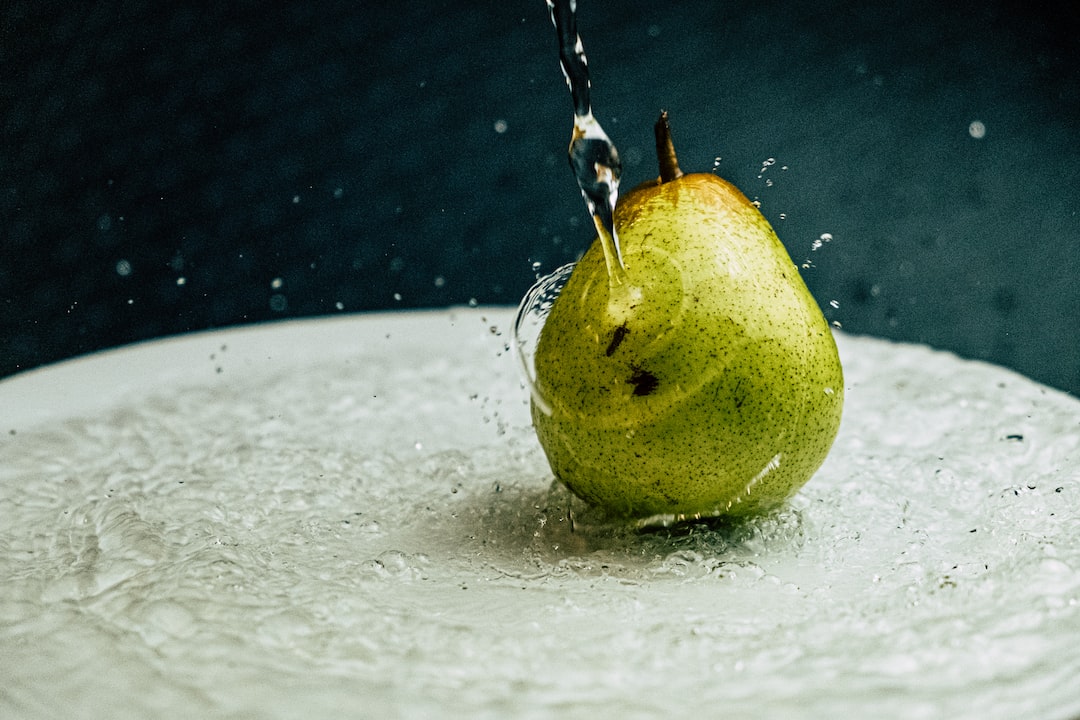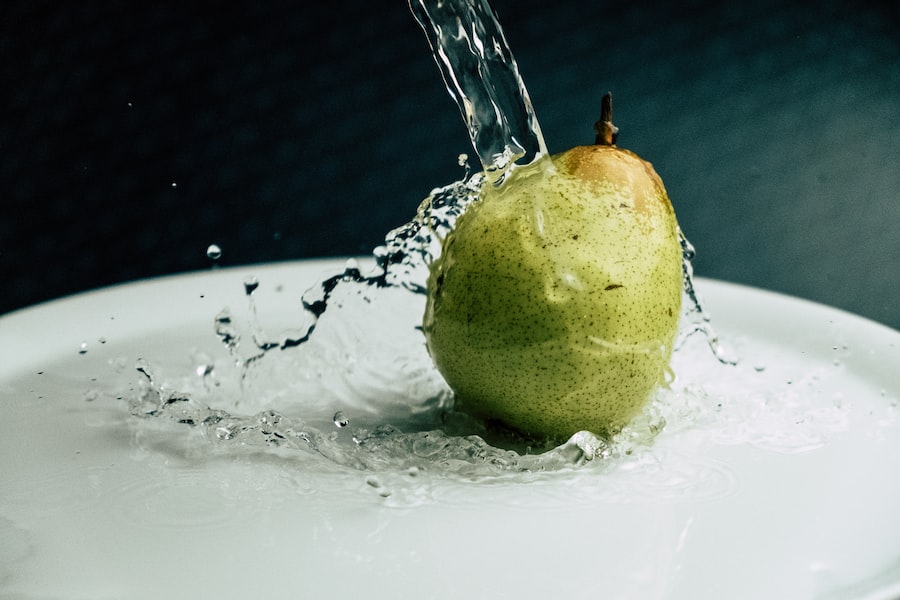When to Harvest Pears: How to Determine When Your Pears are Ready to Pick

Pear harvesting is an important skill for any fruit grower to master. Pears are a delicious and versatile fruit that can be enjoyed fresh, cooked, or preserved. However, in order to fully enjoy the flavor and texture of pears, it is crucial to understand the basics of pear harvesting. This article will provide a comprehensive guide to pear harvesting, covering factors that affect pear ripening, different pear varieties and their maturity dates, techniques for checking for ripeness, the importance of color and texture, judging taste, harvesting techniques, storing pears, using a refractometer, and concluding with encouragement to try harvesting pears on your own.
Key Takeaways
- Understanding the basics of pear harvesting is crucial for a successful harvest.
- Knowing the right time to pick pears is essential for optimal ripeness and flavor.
- Different pear varieties have varying maturity dates, so it’s important to know which ones you have.
- Simple techniques like checking for ripeness, color, and texture can help determine when pears are ready to be picked.
- Taste is a key indicator of pear maturity, so it’s important to judge the flavor before harvesting.
Factors Affecting Pear Ripening
Several factors can affect the ripening process of pears. Temperature and humidity play a significant role in determining how quickly pears ripen. Pears ripen best at temperatures between 60-70 degrees Fahrenheit (15-21 degrees Celsius) with a humidity level of around 85%. If the temperature is too high or too low, the pears may not ripen properly or may become overripe too quickly.
Sunlight exposure is another important factor in pear ripening. Pears need sunlight to develop their sugars and flavors. Pears that receive adequate sunlight will have better flavor and sweetness compared to those that are shaded or receive limited sunlight.
Soil conditions also play a role in pear ripening. Pears thrive in well-drained soil that is rich in organic matter. The pH level of the soil should be between 6.0-7.0 for optimal growth and ripening.
Knowing the right time to pick pears is crucial for achieving the best flavor and texture. Pears should be harvested when they are mature but still firm. If picked too early, they may not ripen properly and will lack flavor. If left on the tree for too long, they may become overripe and mushy.
Pear Varieties and their Maturity Dates
There are many different varieties of pears, each with its own unique flavor and texture. Some popular pear varieties include Bartlett, Anjou, Bosc, Comice, and Asian pears. It is important to know the maturity dates for each variety in order to harvest them at the right time.
Bartlett pears, for example, are typically ready to harvest in late summer or early fall. They are best picked when they are still slightly green and firm. Anjou pears, on the other hand, are harvested in late summer or early fall and should be picked when they are still firm but have a slight give when gently squeezed.
Comice pears are known for their sweet and juicy flavor. They are typically harvested in late summer or early fall and should be picked when they are still firm but have a slight give when gently squeezed. Bosc pears have a distinct flavor and texture and are harvested in late summer or early fall. They should be picked when they are still firm and have a golden brown color.
Asian pears have a crisp texture and are harvested in late summer or early fall. They should be picked when they are still firm and have a yellow or green color.
Knowing the maturity dates for each variety is important because it allows you to plan your harvest accordingly. It ensures that you pick the pears at their peak ripeness, resulting in the best flavor and texture.
Checking for Ripeness
| Method | Accuracy | Time |
|---|---|---|
| Visual Inspection | Low | Fast |
| Touch Test | Medium | Medium |
| Smell Test | Low | Fast |
| Brix Test | High | Slow |
There are several simple techniques you can use to determine if your pears are ready to be harvested. The squeeze test is one of the most common methods. Gently squeeze the pear near the stem end with your thumb and forefinger. If it gives slightly under pressure, it is likely ripe and ready to be picked. If it feels hard, it is not yet ripe, and if it feels mushy, it is overripe.
Another method is the stem test. Hold the pear near the stem and tilt it slightly. If the pear easily separates from the tree with a gentle twist, it is ready to be picked. If it requires a lot of force or does not come off easily, it is not yet ripe.
The skin color test can also be used to determine ripeness. Pears change color as they ripen, so observing the color of the skin can give you an indication of their readiness. However, this method should be used in conjunction with other tests, as color alone is not always a reliable indicator of ripeness.
Color and Texture
Color and texture are key indicators of pear maturity. As pears ripen, their skin color changes from green to yellow or brown, depending on the variety. However, it is important to note that not all pears change color as they ripen. Some varieties, such as Bartlett pears, will turn from green to yellow when ripe, while others, like Bosc pears, will remain brown even when fully ripe.
In addition to changes in skin color, the texture of the pear also changes as it ripens. Pears that are not yet ripe will feel hard and firm when gently squeezed. As they ripen, they will become slightly softer and have a slight give when squeezed. However, it is important to avoid picking pears that are too soft or mushy, as they may be overripe and have a mealy texture.
The Importance of Taste

Taste is perhaps the most important factor in determining if a pear is ready to be harvested. The flavor of a pear can vary depending on its variety and ripeness. Pears should have a balance of sweetness and acidity for optimal flavor.
To judge the flavor of your pears, take a small bite and taste for sweetness and acidity. Sweetness is an important indicator of ripeness, as pears that are not yet ripe will taste bland or slightly sour. Acidity adds a refreshing and tangy flavor to the pear. Pears that are too acidic may taste sour, while those that are too sweet may taste overly sugary.
It is important to taste your pears before harvesting them, as this will give you the best indication of their flavor and ripeness. If they are not yet ripe, you can leave them on the tree for a few more days and taste them again until they reach the desired flavor.
Harvesting Techniques
When it comes to harvesting pears, it is important to handle them with care to avoid damaging the fruit. Using proper tools, such as pruning shears or a sharp knife, can help minimize damage to the tree and the fruit.
When picking pears, hold the fruit gently and twist it slightly to detach it from the tree. Avoid pulling or tugging on the fruit, as this can cause damage to the stem or the fruit itself. It is also important to avoid dropping or throwing the pears, as this can bruise or damage them.
After harvesting, handle the pears with care to avoid bruising or damaging them. Place them gently in a basket or container, making sure not to stack them too high or place heavy objects on top of them.
Storing Pears
Proper storage is essential for keeping your harvested pears fresh and flavorful. Pears should be stored in a cool, dark place with a temperature between 30-40 degrees Fahrenheit (-1 to 4 degrees Celsius). The humidity level should be around 85% to prevent the pears from drying out.
Pears should be stored in a single layer to prevent them from touching each other, as this can cause bruising or rotting. It is also important to check your pears regularly for any signs of spoilage and remove any damaged or overripe fruit to prevent it from affecting the rest of the harvest.
There are several storage containers that can be used to store pears, including cardboard boxes, wooden crates, or plastic bins. Make sure the containers have good ventilation to prevent the pears from becoming too moist or developing mold.
Using a Refractometer
A refractometer is a useful tool for measuring the sugar content of pears. The sugar content, also known as the Brix level, is an important indicator of ripeness and flavor. Pears with a higher sugar content will be sweeter and more flavorful.
To use a refractometer, simply cut a small piece of pear and squeeze a few drops of juice onto the prism of the refractometer. Close the cover and look through the eyepiece to read the Brix level. A reading of 12-14% is considered ideal for most pear varieties.
Measuring the sugar content of your pears can help you determine if they are ready to be harvested or if they need more time to ripen. It can also help you track the ripening process and ensure that you pick your pears at their peak sweetness.
Harvesting pears can be a rewarding experience that allows you to enjoy the fruits of your labor – literally! By understanding the basics of pear harvesting, including factors that affect pear ripening, different pear varieties and their maturity dates, techniques for checking for ripeness, the importance of color and texture, judging taste, harvesting techniques, storing pears, and using a refractometer, you can ensure that you pick your pears at their peak ripeness and enjoy them at their best flavor and texture.
In conclusion, pear harvesting is a skill that can be learned and perfected with practice. By following the guidelines outlined in this article, you can confidently harvest your own pears and enjoy the delicious flavors they have to offer. So why not give it a try and experience the joy of harvesting your own pears? Happy harvesting!
If you’re wondering when is the perfect time to pick a pear, you’ll find some valuable insights in this informative article from Lawn World. They provide expert advice on determining the ripeness of pears and offer tips on how to properly harvest them. To learn more about this topic, check out their article on “When Is a Pear Ready to Pick?” by clicking here.



